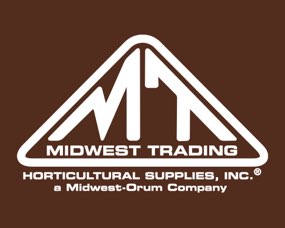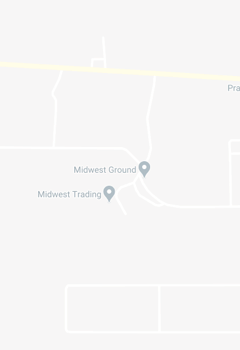Online ordering is currently not available. Please email mtsales@midwest-trading.com or call 630-365-1990 to place your order.
Loosening the soil to provide more airflow around the roots, which is critical to healthy plant growth.
A term describing the internal volume of a growing media that provides air and, more importantly, oxygen to the root system. Reported as a percentage.
A soil-conditioning substance that promotes plant growth indirectly by improving such soil qualities as porosity, moisture retention and pH balance.
Thin, curled strands of wood fibers that have small barbed edges, providing an interlocking feature.
A slow release form of Nitrogen (38-0-0) that releases based on microbial activity in the soil.
AKA High Calcium Lime, Hi-Cal. Derived from Calcium Carbonate and used to increase pH.
Partially decomposed sphagnum moss. Used for its combination of water retention, air porosity and low pH.
A natural fiber extracted from the husks of coconuts. Used for the ability to easily rewet and retain moisture. pH near neutral.
A partially decomposed organic matter. It can be derived from plant residues or animal manures.
A coated fertilizer referred to as a prill. This can be straight NPK, mix of NPK and micronutrients or NPK plus micronutrients in the same prill. The length of release is determined by coating thickness.
Derived from deposits of calcium carbonate combined with magnesium carbonate. Used to increase pH of soil.
The concept of soil loss caused by rain or wind. The use of erosion control blankets, mulch and plant material help prevent soil erosion.
Inert light weight aggregate made from heating mined clay or shale in a kiln at high temperatures to expand and harden. Multiple gradations available, used primarily in greenroof applications but can be adapted whenever lightweight aggregate is desired.
The uplift of water-saturated soil or other surface deposits caused by the freezing of internal moisture. This can be reduced through proper mulching of soil beds.
To coat metal with zinc.
A standard for greenroof media design developed in Germany that specifies performance criteria such as air porosity and infiltration under laboratory compaction, particle size distribution and organic matter content.
Stabilizes the dispersion of polymerization, a chemical reaction in which two or more molecules combine to form larger molecules that contain repeating structural units.
Also known as Ferrous Sulfate, used to lower soil pH and provide Iron (Fe) and Sulfur (S).
A natural product finely ground and screened from leaves of woody plants that conditions the soil, improves water retention and provides a home for earthworms and beneficial microbial activity.
A potential indicator of soil quality to mineralize organic nutrients for growth and development.
To add soil cover of organic materials such as processed bark or compost. Reduces weed seed pressure, evaporation and helps regulate soil temperature.
Spent Mushroom Substrate used in mushroom production.
An organism known to form symbiotic relationships with the root system. Acts as an extension of the root system and can increase absorption of some plant nutrients and water.
The 3 numbers in a fertilizer represent the percent of the Nitrogen, Triple Superphosphate (P2O5), and Potassium/Potash (K2O).
Measurement of carbon in material. Mineral soil range 2-5% by weight. Compost range 35-60% by weight. Tested by Loss on Ignition by burning organic matter off at high temperatures.
A managed byproduct of parboiled rice. It can be used as mulch in container production to reduce weed pressure, used in growing media to provide air porosity to a mix.
A volcanic ore that is heated at high temperatures and pops like popcorn. It is an inert lightweight aggregate used for providing air porosity in growing media.
The concentration of hydrogen ions in soil solution; has an impact on nutrient availability in soil. The pH of growing media is generally 5.5-6.5, field soil pH is generally 6.5-7.5.
Added into growing media in the form of triple superphosphate (0-46-0).
A mineral aggregate used in soil blends to increase drainage. Used in soilless media to provide weight to containers.
The texture of soil refers to the percentage of sand, silt, and clay sized particles in a soil. They are split up into 12 groups of a soil triangle: clay; silty clay, silty clay loam, silt loam, silt, clay loam, loam, sandy clay, sandy clay loam, sandy loam, loamy sand, sand.
The terms: soil, soilless, media, mix, substrate, and dirt are often used in combination and interchangeably. The most important distinction is if a media has mineral soil in it or not. If it does not, it is soilless.
A high quality, fine-textured pine bark for container growing and mulching. Reduces weed growth, retains moisture and may help lower pH.
Nutrient rich compost media. Mushrooms are grown in composted media and after harvest, the media is steam pasteurized and becomes Spent Mushroom Substrate.
A balanced fertilizer applied to mainly greenhouse growing media to provide short term nutrient availability.
The top layer of soil characterized by dark color and higher organic matter.
An additive to plastic film that reduces the effects of exposure to UV light from the sun which will degrade the plastic over time.
An expanded clay mineral utilized as seedling cover or in growing media to retain moisture without reducing air porosity.
A term describing the internal volume of a growing media that provides water retention. Reported as a percentage.
A chemical that can be added to a liquid to reduce its surface tension and make it more effective in spreading over and penetrating surfaces.


Phone: (630) 365-1990
Fax: (630) 365-3818